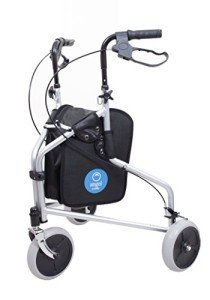As individuals age, preserving mobility ends up being crucial for preserving self-reliance and lifestyle. For lots of seniors, Walking Frame aids such as walkers provide a valued solution to help them browse their environment safely and with confidence. This short article looks into the diverse world of senior walkers, including their types, benefits, use, and some often asked questions.
Walkers, often referred to as walking frames, are mobility aids developed to offer support and balance for individuals who might have problem walking independently. They generally consist of a sturdy frame, grips for holding, and often, wheels for ease of movement. Understanding the various kinds of walkers available can help seniors and their caretakers make educated choices.

| Walker Type | Description | Best For |
|---|---|---|
| Requirement Walker | A four-legged frame that should be lifted to move on. | Seniors requiring optimum stability. |
| Two-Wheeled Walker | A walker with two wheels on the front for simpler mobility. | Those with minor balance problems. |
| Four-Wheeled Walker | A walker with four wheels, frequently includes a seat and brakes. | Active seniors needing mobility and rest durations. |
| Top Rated Rollator Walker | A kind of four-wheeled walker that is lightweight and Foldable Walker. | Seniors who are more active and need slight assistance. |
| Platform Walker | A specialized walker with a platform for assistance, frequently used in physical therapy. | People needing specific support for injuries. |
Senior walkers offer many benefits that considerably improve the mobility and independence of elderly people. Here are some of the most notable benefits:
When selecting a walker, different elements must be thought about to make sure the best fit. Below are key points seniors or caregivers should assess:
To optimize the benefits and minimize dangers associated with walkers, proper use techniques are important. Here are actions seniors should follow:
The rate of senior walkers can vary based upon features and materials used. Standard walkers may cost as low as ₤ 30, while innovative models with wheels and seats might vary from ₤ 50 to ₤ 150.
Signs that a senior might require a walker can consist of frequent stumbling or losing balance, a current surgical treatment or injury affecting mobility, and preventing walking or taking part in social activities.
Yes, walkers can be an important part of physical therapy, assisting seniors regain strength and Rollator With Storage (mymobilityscooters.uk) agility through safe motion.
Walkers can be purchased at Medical Walker supply shops, drug stores, or online merchants. Some insurance strategies may even cover part of the expense.
Regular maintenance includes inspecting for loose parts, making sure brakes operate correctly, and cleaning the frame to prevent rust or wear.
Senior walkers are an important resource for maintaining Mobility Aid and independence as one ages. With different kinds of walkers offered, it is essential for seniors and caregivers to think about personal requirements, use, and convenience when picking an appropriate walking aid. By encouraging safe mobility, walkers not just enhance physical capabilities however likewise favorably effect social connections and psychological wellbeing.
Through proper use and care, seniors can delight in an active, interesting way of life, reinforced by the assistance of their walker. Comprehending the significance of mobility aids like walkers is essential in promoting boosted life quality for seniors facing mobility obstacles.
No Data Found!

